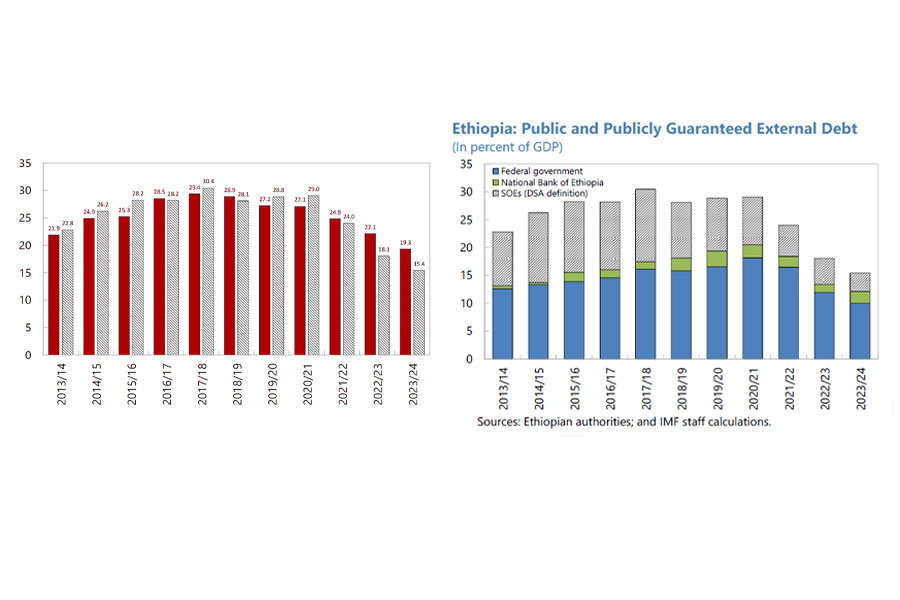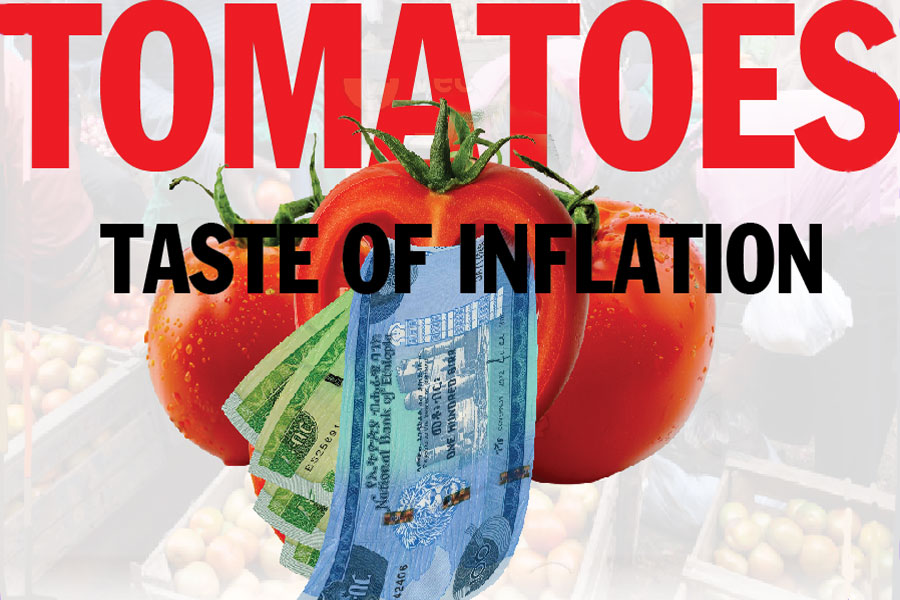
Fortune News | Sep 21,2025
Jun 22 , 2024
By Yemanebrhan Kiros
The cement industry can save foreign currency and create jobs by improving coal quality and boosting energy efficiency. It has a golden opportunity to transform from carbon culprit to climate champion. Adopting efficient technologies and learning from global best practices can drastically lower emissions and energy consumption. It’s time to boost productivity, cut costs, and give consumers a break with fairer prices, writes Yemanebrhan Kiros (yomemech@gmail.com), manager at Yomener Energy Auditing & Engineering Plc.
The cement industry is on the cusp of transforming as federal authorities strive to meet ambitious emission reduction targets outlined in its Climate-Resilient Green Economy (CRGE) strategy. Launched in 2011, the strategy addresses the adverse effects of climate change while propelling Ethiopia towards becoming a middle-income country by 2025. The government has set a target to reduce emissions by 64pc from business-as-usual scenarios by 2030.
Further initiatives as part of Ethiopia’s nationally determined contributions (NDC) to the Paris Agreement plan to slash CO2e emissions by 68.8pc.
Despite the looming deadlines, many industries remain entrenched in traditional practices. This inertia calls for immediate action from federal agencies. Among the various sectors identified in the strategy, the cement industry is notably responsible for a portion of CO2e emissions, contributing approximately half. The emissions in this sector predominantly stem from the calcination of lime and fuel combustion. The calcination process accounts for most CO2e production, but coal combustion in kilns and precalciners also plays a substantial role.
Cement plants consume vast quantities of coal daily, leading to considerable emissions. An average cement mill may consume up to 100tns of coal daily, revealing the substantial savings potential. Stakeholders, including industry players and those focused on emission mitigation, need to examine and address this aspect closely.
Prioritising the cement industry is essential for Ethiopia to meet its CRGE goals.
The sector holds the potential to achieve a 70pc reduction in CO2e emissions, a target driven by the anticipated 20pc annual growth in cement production. Efficient coal combustion remains a critical avenue for emission reduction.
Promoting energy efficiency in the cement industry can lead to higher productivity and greater efficiency. However, energy efficiency has not received the necessary attention within the manufacturing sector, including the cement industry. The conversation around energy efficiency among industry players needs to be enhanced immensely.
The energy consumption of an average cement plant can range between 10MW to 20MW during full operation. Governmental institutions supporting the cement industry should focus not only on productivity but also on energy efficiency. Energy savings can bolster smaller plants or increase available power for export. Hence, addressing energy wastage within cement mills can reduce emissions. Efficient energy use would allow the country to redistribute more power generated from plants, potentially equating to the output of some power plants.
Plant roles in energy efficiency are critical. Achieving energy efficiency requires collaboration among public, non-state and private institutions, including factory management. Pivotal initiatives should include raising awareness, setting mandatory performance indicators for energy efficiency, improving spare part management, reducing power interruptions, and enhancing the technical capabilities of operators and engineers. The cement sector demands skilled technical knowledge to run efficiently. Forming think tanks with extensive experience to support local industries could be beneficial, especially as more cement plants will likely be established to meet the country’s infrastructure needs.
Frequent power interruptions are a major cause of energy loss and increased emissions per ton of clinker or cement. When power is interrupted, production lines cool from high to ambient levels, requiring energy to reheat to operational temperatures. Lengthy interruptions can take days to recover from, with fans and motors running full capacity to distribute heat, consuming megawatts of electrical energy and tons of coal. Adopting more energy-efficient production practices must be a priority and implemented promptly.
Local regulations and directives should incorporate energy efficiency concepts. Introducing a directive restricting the use of 100pc imported coal has spurred local investment in coal-washing plants, saving foreign currency and impacting industrialisation and employment. Coal-washing plants address challenges such as poor coal quality, low calorific value, high sulfur content, and volatile matter, improving local industries' efficiency.
Technological adaptations for more efficient production need thorough investigation and adoption. Learning from other countries’ experiences can help achieve lower emissions and energy consumption. Despite their higher emissions and energy wastage, technologies like vertical shaft kilns require support and intervention due to their lower investment costs and potential to enhance production. Experts can establish a clear balance between emission reduction and running such technologies.
Reducing emissions through energy efficiency meets environmental responsibilities and boosts productivity. Energy efficiency projects result in increased output and can enhance cost competitiveness among domestic industries, benefiting consumers with fair prices.
Given the cement industry’s susceptibility to energy wastage and CO2e emissions, special attention is required to enhance overall efficiency and reduce carbon emissions. Its transformation depends on meeting the targets of the climate-resilient green economy strategy.
PUBLISHED ON
Jun 22,2024 [ VOL
25 , NO
1260]


Fortune News | Sep 21,2025

Viewpoints | Jul 20,2024

Featured | Sep 11,2020

Sunday with Eden | Dec 04,2021

Commentaries | Mar 07,2020

Photo Gallery | 174638 Views | May 06,2019

Photo Gallery | 164862 Views | Apr 26,2019

Photo Gallery | 155073 Views | Oct 06,2021

My Opinion | 136699 Views | Aug 14,2021
Editorial | Oct 11,2025

Dec 22 , 2024 . By TIZITA SHEWAFERAW
Charged with transforming colossal state-owned enterprises into modern and competitiv...

Aug 18 , 2024 . By AKSAH ITALO
Although predictable Yonas Zerihun's job in the ride-hailing service is not immune to...

Jul 28 , 2024 . By TIZITA SHEWAFERAW
Unhabitual, perhaps too many, Samuel Gebreyohannes, 38, used to occasionally enjoy a couple of beers at breakfast. However, he recently swit...

Jul 13 , 2024 . By AKSAH ITALO
Investors who rely on tractors, trucks, and field vehicles for commuting, transporting commodities, and f...

Oct 11 , 2025
Ladislas Farago, a roving Associated Press (AP) correspondent, arrived in Ethiopia in...

Oct 4 , 2025
Eyob Tekalegn (PhD) had been in the Governor's chair for only weeks when, on Septembe...

Sep 27 , 2025
Four years into an experiment with “shock therapy” in education, the national moo...

Sep 20 , 2025
Getachew Reda's return to the national stage was always going to stir attention. Once...

Oct 12 , 2025
Tomato prices in Addis Abeba have surged to unprecedented levels, with retail stands charging between 85 Br and 140 Br a kilo, nearly triple...

Oct 12 , 2025 . By BEZAWIT HULUAGER
A sweeping change in the vehicle licensing system has tilted the scales in favour of electric vehicle (EV...

A simmering dispute between the legal profession and the federal government is nearing a breaking point,...

Oct 12 , 2025 . By NAHOM AYELE
A violent storm that ripped through the flower belt of Bishoftu (Debreziet), 45Km east of the capital, in...